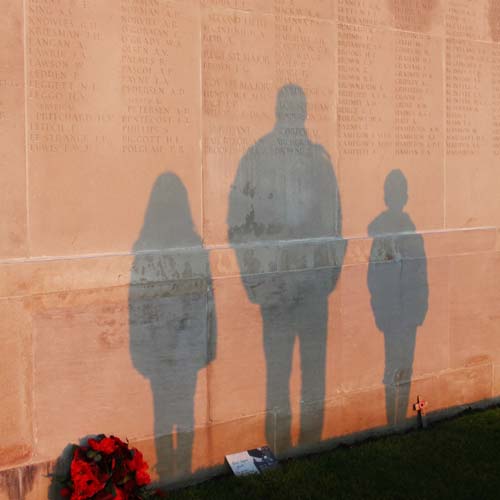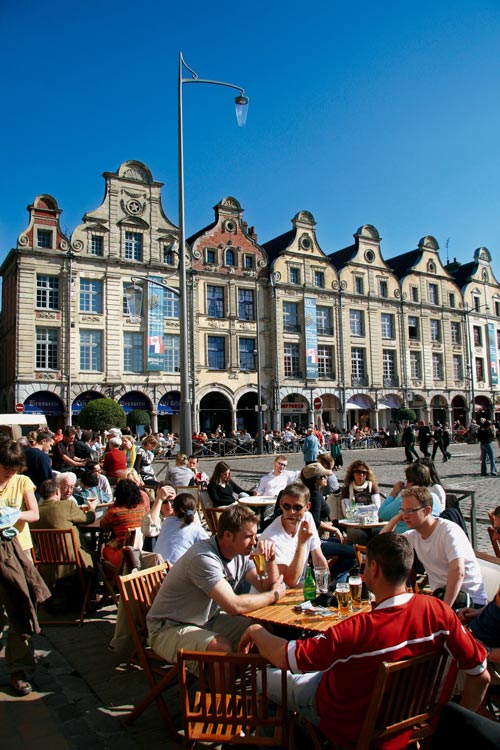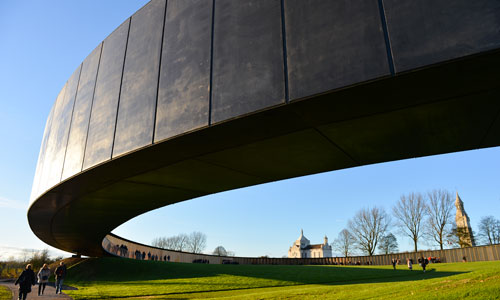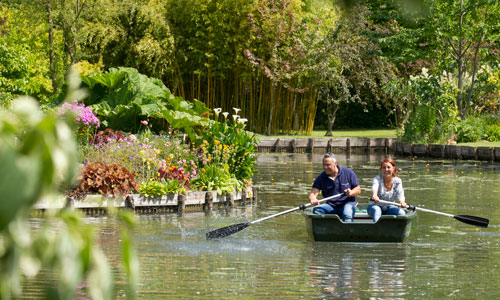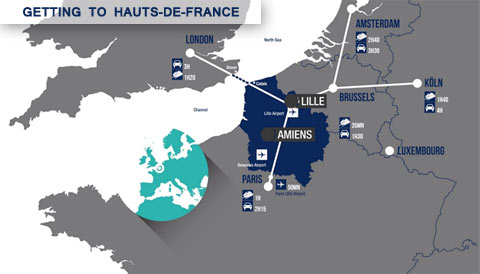There is no doubt that November 11 will bring a new focus on the events of 1914-18, drawing to an obvious conclusion four years of centenary events that have seen thousands of moments marked. For many the remembrance will be very personal, a memory of a relative long lost to history. For the politicians and royals, the symbolism is perhaps greater as they struggle to forge a peaceful future in a dangerous world. For the regions of France that suffered so much, they will mark the dawn of a new era of remembering as the next one hundred years begin. A further century of visiting and remembering the momentous events that ended in a railway carriage in a forest a hundred years ago.
On November 11, 2018 all eyes will be on Paris as world leaders gather to mark the centenary of the end of WW1, ‘the war to end all wars’. However, in the days leading up to November 11, 100 years ago, as Maréchal Ferdinand Foch, sought to bring the Great War to an end, the attention of the world was very far from his mind. Indeed, in choosing a quiet railway siding in Rethondes, in the Compiègne Forest, 70km north east of the French capital, the 67-year-old supreme allied commander was very deliberately avoiding the gaze of the world, and journalists in particular.
In his carriage, hidden in a railway siding in the forest, recently laid to aid the manoeuvre of a giant railway gun, the great French soldier, with an eye on history, knew that if the negotiations failed, with thousands still dying every day, an accusation of prolonging the slaughter would destroy his reputation. But they were not really to be any negotiations.
The Germans, a strange mix of civilian politicians and senior but obscure military officers, had arrived on November 8, travelling in great secrecy in their own railway carriage, formerly the imperial train of Emperor Napoleon III. After walking the 100 metres to Foch’s dark blue Wagon-Lit carriage they were quickly assured that there would be no debate. Foch told his interpreter to ask them what they wanted? We have, “come to hear armistice proposals from the Allies”. To which Foch replied: “I have no proposals to make”.
Just three months earlier as the Germans had made their last great pushes to defeat the allies, the Western Front’s frontline had moved to within 20km of Compiègne. But now, after the decisive turning points of the Second Battle of the Marne and the Battle of Amiens, the exhausted Germans were being pushed back on a daily basis and the leaders in Berlin, where civil unrest was barely contained, knew the war was all but over.
And so, there were to be no negotiations; just three days of toing and froing; as messages were relayed to Berlin and Paris, before the armistice document was signed at 5.12am on November 11. For ‘tidiness’ it was agreed the ceasefire would come into operation at 11am – the 11th hour of the 11th day of the 11th month – and so the guns fell silent.
There were few niceties observed: After the signing Foch refused to shake hands. He said: “Eh bien, messieurs, c’est fini. Allez.” (“Well, gentlemen, it’s finished. Go.”). And in the near six hours of ‘tidiness’ an estimated 3,000 men lost their lives… including Augustin Trébuchon, the last French soldier killed in World War I, the Canadian Private George Lawrence Price, recognised as the last soldier of the British Empire to be killed, and Henry Gunther, an American killed at 10.59am, one minute before the Armistice was to take effect, in the village of Chaumont-devant-Damvillers near Meuse, in Lorraine, and remembered as the last of any of the belligerents to be killed during WW1.
Compiègne today
Today Rethondes and Compiègne remain important centres of remembrance of the Great War. The Glade of the Armistice, centre of the historic events – and later the highly symbolic site for the signing of the French surrender to Adolf Hitler in 1940 – is home to a number of memorials and monuments and the permanent museum that houses the Compagnie des Wagon-Lits carriage, No. 2439, built in 1913 in the same batch as the original and present in 1918, that now stands in for Foch’s headquarters carriage that was lost during the battle for Berlin in 1945. Ahead of the centenary celebrations the museum has benefitted from a programme of expansion and redevelopment and now includes a fascinating 3D audio-visual explanation of the events of one hundred years ago.
Close by is Rethondes church (Église de Rethondes) where the deeply religious Foch and his Chief of Staff Général Weygand went to meditate in the hours before the signing ceremony; an event marked by plaques on the walls of the church and by a stained-glass window above the altar depicting the two soldiers either side of the carriage where the armistice was signed.
Compiègne itself remains an obvious location to base a remembrance trip from. Famous as the starting point of the legendary Paris-Roubaix annual one-day cycle classic, the town is also known for the Palace of Compiègne, an important home for the French Royal family before the revolution, notably Louis XVI. And later much expanded and restored by Napoleon, leading the writer Auguste Luchet to remark that ‘Compiègne speaks of Napoleon as Versailles does of Louis XIV’. Incidentally, if French palaces attract you, the nearby Château de Pierrefonds, restored to its medieval glory by Louis-Napoléon Bonaparte, located just 20km south-east of Compiègne, is a must visit!
A Michelin-starred chef in a french village nestled in the heart of the forest of Compiègne
The Forest of Compiègne is a popular destination in its own right, famed for its tranquil spaces and the seemingly endless walking and cycling trails. The third largest French national forest after those near Orléans and Fontainebleau, Compiègne (combined with the neighbouring forests of Laigue and Retz) constitutes a mass of trees stretching to 320 square kilometres. If a more rural base appeals, there are villages dotted around the forest. In the heart of the forest is the medieval village of Saint Jean aux Bois, where you will find the Auberge A la Bonne Idée, a three-star hotel and restaurant. Close to the 750-years-old ‘Saint-Jean’ oak, said to be the oldest tree in the forest, guests of A la Bonne Idée can saviour the very finest French cuisine, courtesy of Michelin-starred Chef Yves Giustinani.
The region explored
Whilst Compiègne’s place in history is assured, the reality is that the events of 1914-18 affected huge swathes of northern France and Flanders. So often characterised as a static, rat-infested muddy wasteland, the truth of the Western Front is that it had moments of great movement, bringing villages, towns and cities in and out of the cataclysm as new engagements and initiatives brought the great armies into contact.
The centenary on November 11 will see commemorative ceremonies taking place in many of the towns and villages of France – and Great Britain, Belgium, America, Australia, New Zealand… – as the world marks one hundred years to the day since the ending of hostilities.
And away from Compiègne, many other locations make perfect bases for visits to significant Great War locales.
Arras, the capital of the Pas-de-Calais department, has long resonated with Great War remembrance. For Canadians in particular, its location below the fabled Vimy Ridge, site of the spectacular Canadian National Vimy Memorial, makes the town a place of special pilgrimage. Scene of 1917’s Battle of Arras, which saw the New Zealand Tunnelling Company expand a series of medieval and Roman tunnels into a hidden underground world that played a decisive factor in the British forces holding the city. A visit to the Wellington Quarry takes visitors deep below the town as the guide recreates the morning of April 9, 1917, when 20,000 allied soldiers broke out from the tunnels and galleries, emerging just a few metres from the German positions.
Essentially entirely rebuilt after four years on the frontline, Arras today is dominated by its two main squares in classic Flemish-Baroque style. So familiar to visitors to northern France the town also boasts a UNESCO-listed belfry and, slightly unusually, a host of Art Deco buildings, a legacy of the rebuilding in the 1920s when the style was much in vogue. Notable buildings include the Vauban Citadel, part of the renowned Vauban fortifications built in the seventeenth century to protect France; nicknamed the ‘beautiful useless one’ (La belle inutile) by locals due to its singular failure to protect the city! A perfect base for a visit is the 4-star Najeti Hôtel de l’Univers in the centre of the town. This former XVII century Jesuit monastery is a local institution famed for its Le Clusius restaurant. For visitors planning a trip to Arras around the centenary celebrations the website
www.arras1418.fr is dedicated to providing useful information on specific events, of which there are a number on November 11 itself.
Remembering anew
Close to Arras, the village of Ablain-Saint-Nazaire was at the centre of the opening hostilities of 1914. The Battle of Lorette lasted for 12 months, from October 1914 to October 1915, and resulted in 100,000 killed and as many wounded. The cemetery that was established close by has evolved into the Notre-Dame-de-Lorette French Military Cemetery, the world's largest French military cemetery, and now the location for the new Ring of Remembrance memorial. In total 40,058 French soldiers are buried here in individual tombs and in seven ossuaries. The Ring of Remembrance, which opened in 2014 and must lay claim to be the most significant memorial established during the centenary years, is a vast ellipse, engraved with nearly 600,000 soldiers’ names, one after another, on a series of 500 steel plaques. The names are presented in alphabetical order, without any distinction of nationality, gender, rank or religion, unifying all the dead for eternity.
Albert, in the centre of the Somme region, midway between Amiens and Bapaume, was at the heart of the Battle of the Somme and consequently changed hands a number of times during the war. Almost totally destroyed, today the town is a vibrant centre, well known for WW1 tourism and home to one of the most famous icons for the British of the Great War – the Golden Virgin on top of the Basilica. Damaged early in 1915, the statue of the Madonna fell to a horizontal position, leading to the legend that when the statue fell the war would end. It eventually succumbed to – probably deliberate – British fire after the town had been re-occupied by the Germans during the Spring Offensive of 1918. Following the war, the Basilica was rebuilt, and the golden statue replaced, where today it dominates the town. Accommodation in Albert is limited, but Le Clos du clocher [
www.leclosduclocher.com] is a friendly bed and breakfast in Gueudecourt, a small village in the Haute-Somme Valley, between Albert and Péronne, and makes an ideal starting point for visits to the Battlefields of the Somme, Arras and Amiens. Book in advance a take advantage of host Sylvie’s culinary skills, as local specialties such as ficelle picarde (ham and mushroom crepes in a cream sauce) or velouté d'endives (chicory velouté) ensure the perfect end to a day’s sightseeing.
Again, a host of events are planned for the centenary weekend, and the website
www.somme-battlefields.com is an invaluable guide to much that is taking place as well as offering a wealth of ideas for visits to the region.
Amiens during WW1
On a much grander scale, the town of Amiens, nestling on the banks of the River Somme and known as the Little Venice of the North, was briefly occupied by the Germans in 1914, before being recaptured by the French to play an important role during the war as a headquarters and logistics centre. A key objective for the Germans during the Spring Offensive of 1918, the capital of the Somme region was at the heart of 1918’s Battle of Amiens, the opening phase of the Hundred Days Offensive which led directly to the Armistice. Though scarred by the events of 1914-18, the town today is everything you would expect of a vibrant regional capital.
Amiens is the ideal place to base yourselves for the true WW1 discovery experience if you are attracted to staying in a bigger town. Full of restaurants, cafés, etc., you will have lots of options for evening outings and enjoying great French fare after a busy day of exploring.
There is a wide choice of accommodation, a wealth of sites to visit – the famous Cathédrale Notre-Dame d'Amiens, home to the famous ‘The Weeping Angel’ statue and the house of Jules Verne are particularly memorable – and all the amenities one would expect for lovers of French culture, food and drink. Notable are the Quai Saint Leu district with its bustling restaurants on the banks of the canals and Les Hortillonnages floating gardens.
Close by is the Castle of Clermont-Tonnerre that WW1 served as headquarters of the British General Staff, for the Battle of the Somme in 1916, and then to the Australian General Staff under the command of General John Monash. And in Villers Bretonneux, just east of Amiens, you will find the Australian National War memorial, where Anzac Day is marked each year. This imposing memorial in white stone consists of a high central tower connected to two wings by simple walls on which are inscribed the names of 10,771 Australian soldiers reported as missing on the Western Front, and who have no known grave.
Accommodation choices range from friendly bed and breakfast operations to fine hotels with world class amenities. The Hôtel Marotte is a renowned 5-star boutique hotel. Centrally located, the hotel is close to the shops, restaurants and bars of Amiens. The hotel wows its guests, with décor from the Belle Époque; spacious, elegant and calm. Its suites boasting either spa or sauna – luxury on tap!
Opposite Amiens Cathedral is the charming 3-star Hôtel le Prieuré. Rated number two of 21 hotels in Amiens on TripAdvisor, this hotel has long been a popular base for visitors to Amiens.
Key events 11 november 2018
In Arras, so often at the heart of the battlefields of the Somme, there will be a gathering at 9am at the British Memorial to commemorate the centenary. The evening before candles will be lit at the cemetery du Faubourg d’Amiens to symbolise the peace. The whole evening of November 10-11 will be taken up with La Grande Veilleé – The Great Vigil – to honour all soldiers who fell during the Great War, within the Arras territory and beyond.
In Villers-Bretonneux local dignitaries will gather in Place du Général de Gaulle before the traditional wreath laying at the war memorial.
On a much larger scale, Amiens’ day of remembrance will start with a walk from the Comédie de Picardie to the Place du Maréchal Foch, through the ‘Parmi Nous’ exhibition, by the artist Jérôme Toq’R. Later 200 local schoolchildren will join the commemoration at the Amiens War Memorial in Place du Marechal Foch.
The Ring of Remembrance will host a whole weekend of family activities, including a programme throughout the weekend at the interpretation centre and a one-day event at the Memorial 14-18 Notre-Dame-de-Lorette on Sunday, November 11. Events will include a concert, march and light show to mark the centenary of the end of the Great War.
If you are planning on visiting the region over the weekend of the centenary, check with the local tourist offices as there are a vast number of events, small and large, as the world remembers the momentous events of one hundred years ago.
As the guns fell silent on the morning of November 11, 1918, the world marked the end of a war that has seen around seventeen million people lose their lives. One hundred years later the eleventh hour of the eleventh day of the eleventh month remains one of the most memorable dates in history. No more so than in the northern France region that was witness to the four years of momentous events that shaped the modern world.
